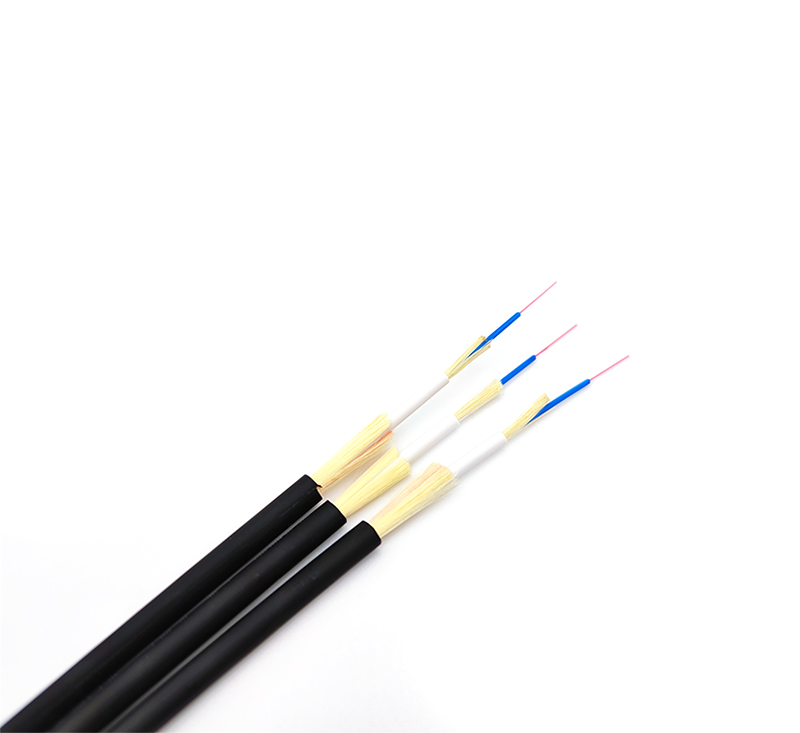When the fiber is in a vacuum environment, because there is no water molecule, stress corrosion will not occur, the fatigue parameter n is the maximum value, and the fiber also has the highest strength. The strength at this time is the inert strength of the fiber, which is called Si . The relationship between the service life ts of the optical fiber in the use environment and the stress σ it bears and the inert strength Si of the fiber is as follows: lgts=-nlgσ+lgB+(n-2)lgSi In the above formula, the latter two are both Therefore, when the stress σ is constant, the service life ts of the fiber is only related to the value of the fatigue parameter n of the fiber. The larger the value of n, the longer the lifetime ts of the fiber.

Therefore, there are two ways to improve the service life of optical fibers:
First, when the fatigue parameter n is constant, the fiber life ts is only related to the stress σ it is subjected to. Therefore, reducing the stress experienced by the fiber is a way to improve the service life of the fiber. When people manufacture an optical fiber, a compressive stress is formed on the surface of the optical fiber to resist the tensile stress received, so that the tensile stress is reduced to the minimum extent possible, and the compressive stress cladding technology is produced to manufacture the optical fiber.
If the stress on the fiber is σa and the life is t1, when the fiber has a compressive stress σR cladding, the life of the fiber is t2: t2=t1[(σa-σR)/σa]-n where, (σa-σR ) is the actual net stress experienced by the fiber. This shows that the fiber with compressive stress cladding is much longer than the ordinary fiber. In recent years, some people use GeO2-doped silica as the compression layer on the surface of the fiber, and some people use TiO2-doped silica as the outer layer of the fiber to increase the tensile strength of the fiber itself from 50kpsi to 130kpsi (the equivalent tensile strength is increased from 430g to 1100g), It also increases the static fatigue parameters of the optical fiber from n=20~25 to n=130.
Second, improve the static fatigue parameter n of the optical fiber to improve the service life of the optical fiber. Therefore, when manufacturing optical fibers, people try to isolate the quartz fiber itself from the atmospheric environment, so that it is not affected by the atmospheric environment, and try to change the n value from the environmental material parameters to the parameters of the optical fiber material itself, so as to make the The value of n becomes very large, resulting in the "sealing coating technology" on the surface of the optical fiber.
In the past decade, tremendous progress has been made in the use of "sealed coating technology" to manufacture optical fibers. Coating materials are extended from metal species to metal oxides, inorganic carbides, inorganic nitrides, carbides, oxynitrides and CVD-deposited amorphous carbon. The coating structure is developed from a single metal coating to a composite coating structure combining a sealing coating and an organic coating, which makes the optical fiber more valuable for practical applications, and the optical properties, mechanical properties and fatigue resistance of the fiber are improved.
For example: ①Metal-coated optical fiber: Aluminum-coated optical fiber can withstand a stress of 1Gpa (150kpsi), immersed in water, and used at a temperature of 350°C, with a life span of more than 10 years. ② Optical fiber coated with metal oxides and other inorganic substances: use C4H10 and SiH4 to deposit a sealing coating of Si0.21O0.22C0.77 on the surface of the fiber, and coat with an organic layer, the n value of the fiber can reach 256. ③ Optical fiber with boron nitride as sealing coating: it can withstand the tensile force of 200kpsi, and the n value can be increased to more than 100. Another example is that the optical fiber sealed and coated with TIC has a strength of 400 to 500 kpsi and can withstand water at 100°C. ④Amorphous carbon sealed coated fiber: Among inorganic coating materials, the amorphous carbon coating not only has little damage to the optical properties and mechanical strength of the fiber, but also exhibits good water resistance and hydrogen resistance. This technology has moved towards industrial production. Typical tensile strengths of such fibers have reached 500 to 600 kpsi and dynamic n values of 350 to 1000. After 25 years at room temperature, the penetration of hydrogen into carbon-sealed coated fibers is only 1/10,000 that of ordinary fibers; in optical cables, such fibers can tolerate hydrogen pressures 100 times higher than ordinary fibers. With this fiber, the cabling conditions can be appropriately reduced or used under higher temperature conditions.










